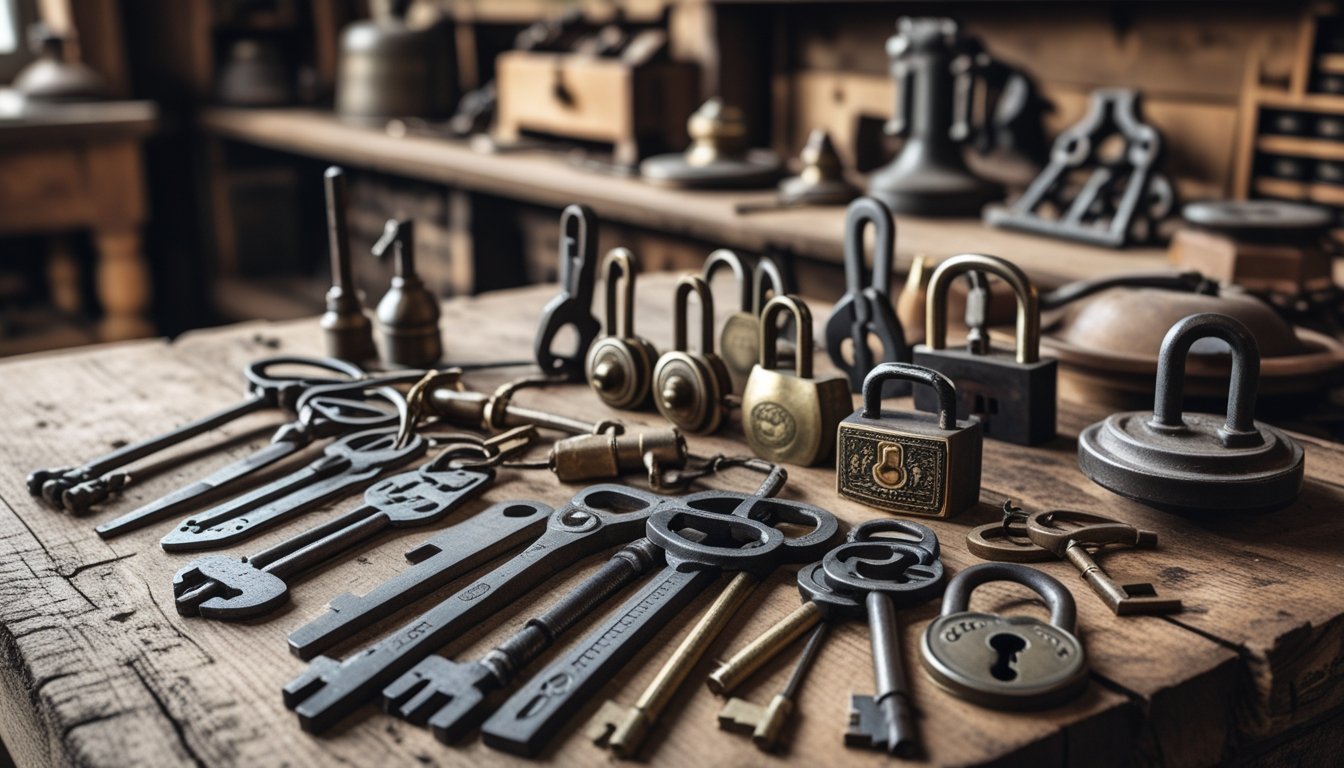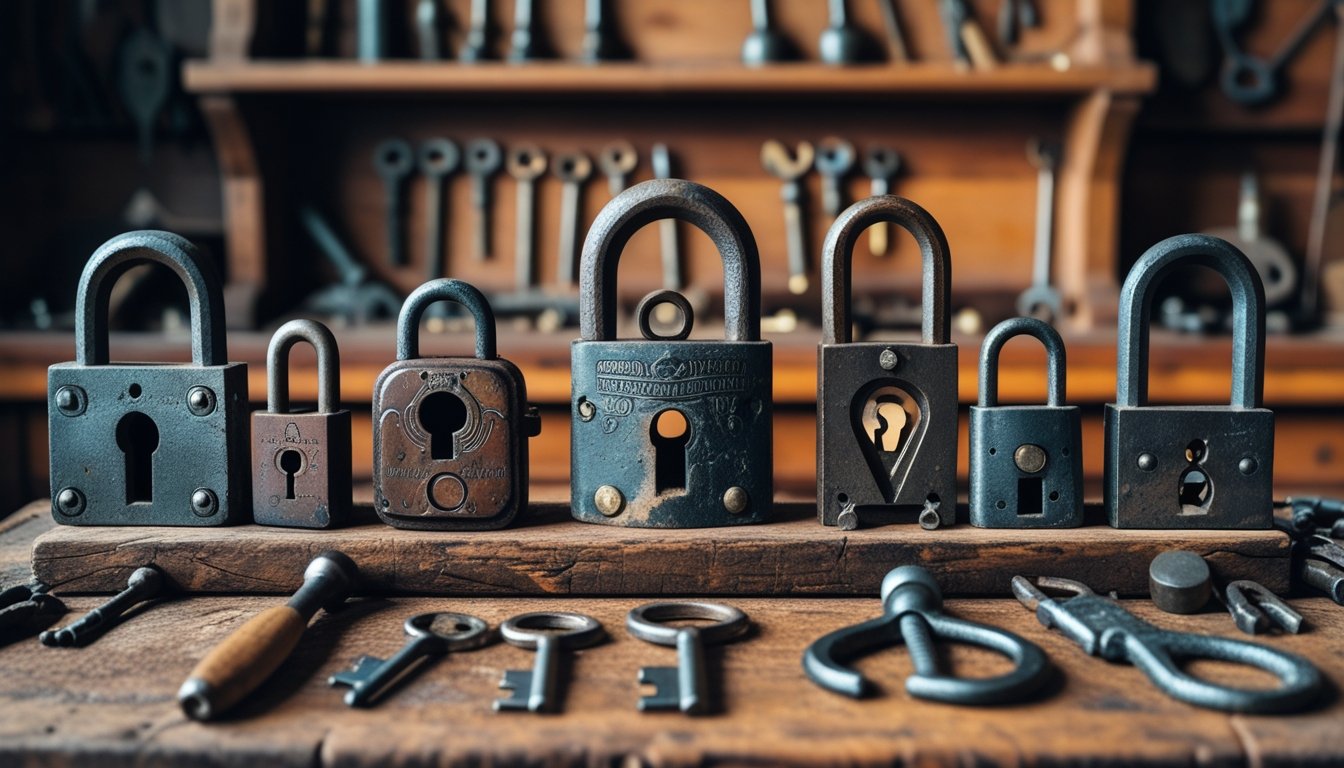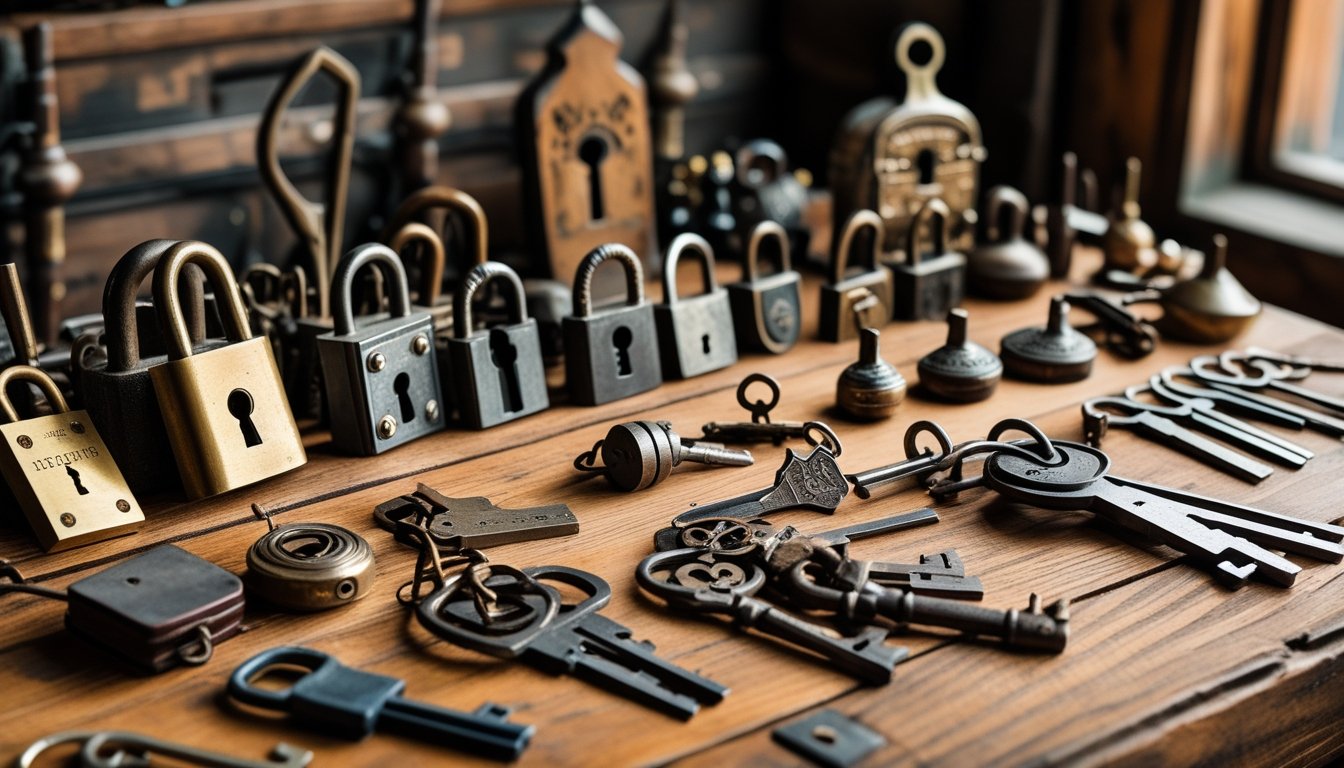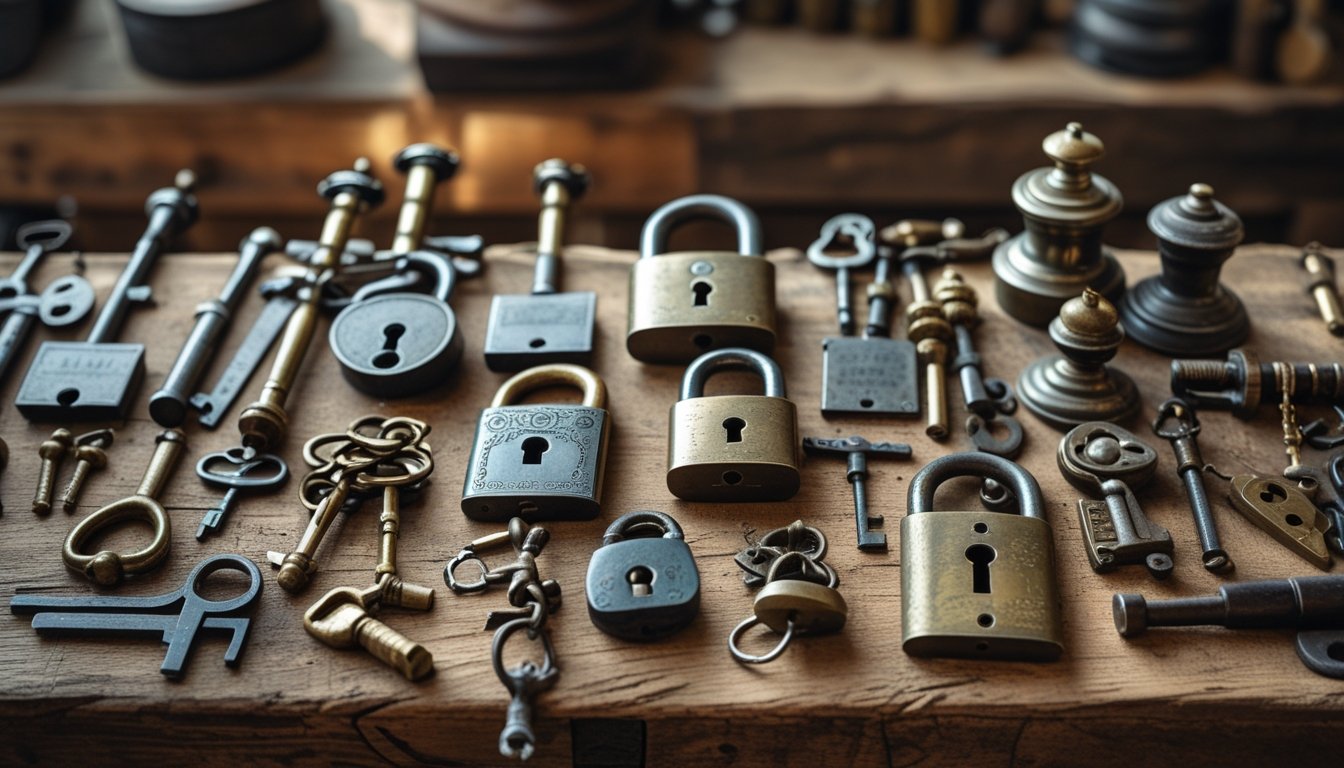Late updated: 06 Aug 2025 13:08
Written by: Elena Prescott
Top Historical Locksmith Tools Used in the UK: A Journey Through Time
Locksmithing in the UK has a rich history that stretches back several centuries. As guardians of security, locksmiths have wielded a fascinating array of tools. These instruments were not only pivotal for their functionality but also reflect the evolving nature of security - from handmade wooden picks to precision-engineered modern tools. Understanding the tools used by locksmiths throughout history offers insight into how the profession has adapted to technological and security demands over time.

In ancient times, locksmiths utilised simple, handcrafted tools created from accessible materials like wood and bone. As industrialisation swept through the UK, more sophisticated tools emerged, shaped by advancements in manufacturing and materials science. These tools became more efficient and capable of addressing a broader spectrum of security challenges. As we trace the lineage of these tools, we also uncover the stories of innovation and adaptation in the face of changing security landscapes.
Modern locksmiths still find value in understanding historical tools, as these early instruments laid the foundation for current practices. From rudimentary picks to today's state-of-the-art digital tools, the history of locksmithing in the UK is a testament to human ingenuity. It showcases how a trade rooted in ancient necessity has transformed into a cornerstone of modern security.
Key Takeaways
- Locksmith tools have evolved significantly over time, reflecting technological advancements.
- Historical tools laid the foundation for modern security practices in the UK.
- Studying these tools provides insight into the adaptability of locksmithing.
Iconic Historical Locksmith Tools Used in the UK

In the fascinating world of locksmithing in the UK, several tools have become iconic due to their impact and utility. These tools exhibit unique craftsmanship and intelligence, offering solutions for non-destructive entry and security challenges.
Lock Picks and Tension Wrenches
Lock picks and tension wrenches hold special importance in the art of locksmithing. Lock picks are essential for manipulating the pins inside a lock without using its original key. They come in various forms, such as hooks, rakes, and diamonds, each suited for different lock types.
The tension wrench works in tandem with lock picks, applying the necessary rotational pressure to the lock cylinder. This tool is indispensable for executing precise movements to align the pins correctly. Together, these tools enable locksmiths to perform non-destructive entry, making them a cornerstone of the trade.
Letterbox Tools and Mica Cards
Letterbox tools and mica cards are ingenious solutions for reaching traditional locks through a letterbox without causing damage. Letterbox tools typically include a range of accessories such as openers and latches, which fit through the letterbox to manipulate locks from the inside.
Mica cards, on the other hand, are thin and flexible, allowing them to slide between the door and frame to release the latch. This method is often used when the key is misplaced, offering a quick, non-destructive entry. These tools showcase the adaptability and resourcefulness of locksmiths.
Door Spreaders and Slim Jims
Door spreaders and slim jims employ clever techniques to deal with locks on vehicles and certain doors. Door spreaders are utilised to create a slight gap between the door and frame, providing access to the lock mechanism inside.
Slim jims are flat, elongated tools that slide down the window of a car door to manipulate the internal locking mechanism directly. Both tools reflect the innovative methods locksmiths use to gain access without causing damage, highlighting their craftsmanship and skill in non-destructive techniques.
Key Decoders and Impressioning Kits
Key decoders and impressioning kits are vital for creating key duplicates when no existing key is available. Key decoders analyse the lock mechanism to determine the correct key code or pattern, enabling locksmiths to produce a matching key.
Impressioning kits involve taking impressions directly from the lock to shape a key. This technique requires a high degree of precision and skill and is particularly useful when dealing with high-security locks. Together, these tools demonstrate the remarkable capabilities of locksmiths to navigate complex security challenges effectively.
Evolution and Impact of Locksmithing Tools in British History

Locksmithing in the UK has evolved significantly over time, reflecting technological advancements. Medieval craftsmanship laid the groundwork for intricate designs, which later transitioned to power-operated tools during the industrial era. Digital and electronic developments have further revolutionised the trade.
Craftsmanship in the Medieval and Industrial Periods
In the medieval period, locksmiths were revered craftsmen, producing ornate locks. Hand-forged iron and brass were the main materials, requiring skill and artistry. They used tools like hammers, chisels, and files to create detailed designs that often incorporated symbolic themes.
As we moved into the industrial era, the introduction of machines changed the landscape. Mass production began, but the role of individual craftsmanship remained significant. Machine tools such as lathes became pivotal, allowing precise designs and standardised production of keys and locks. This period marked a shift from bespoke creations to widely available security solutions.
Transition from Manual to Power-Operated Equipment
The industrial revolution brought about a radical transformation in locksmithing tools. Where once every lock was laboriously handmade, now power-operated equipment could produce consistent and reliable results.
Tools like powered drills and lathes emerged, enabling locksmiths to work more efficiently and with greater precision. These advancements meant locks could be produced more quickly, reducing costs and making security more accessible to a broader audience. This shift improved the mastery of locksmiths in creating complex mechanisms and allowed for more innovation in design and function.
Digital and Electronic Tool Advancements
In recent decades, the greatest evolution has been the integration of digital and electronic tools. Locksmiths now use digital diagnostic tools and programming devices to work with modern security systems.
The emergence of smart locks and biometric systems has led to new challenges and opportunities in the field. Locksmiths must adapt by mastering new technologies and methodologies, ensuring they can continue to provide essential security in an increasingly digital world. This technological leap has placed a premium on adaptability and continuous learning as the field of locksmithing expands beyond traditional boundaries.
Frequently Asked Questions

Our discussion will explore a range of historical locksmith tools, spanning different eras in the UK. From the distinctive tools used by locksmiths in Victorian Britain to the specialised instruments developed for safe-making, we shed light on the evolution of locksmithing techniques through the centuries.
What types of lock-picking tools were commonly used by locksmiths in Victorian Britain?
During the Victorian era, locksmiths utilised a variety of lock-picking tools designed to manipulate the intricate mechanisms of contemporary locks. Skeleton keys were among these, uniquely crafted to fit multiple locks. Tools like slim jim and torsion wrenches were also used, valued for their skill in disengaging tumblers and unlocking systems.
Which tools did locksmiths in the Medieval period in the UK favour for creating locks and keys?
In medieval Britain, locksmiths relied on rudimentary tools crafted from readily available materials such as steel and iron. Files, anvils, and hammers were essential for shaping intricate lock mechanisms and keys. Bellows were frequently employed to maintain the heat of forge fires, ensuring the required temperatures for metalworking.
Can you detail the evolution of locksmithing tools from the Tudor to the Georgian era?
From the Tudor to the Georgian era, locksmithing tools matured significantly. During the Tudor period, more sophisticated files and chisels became commonplace, allowing for detailed metalwork. By the Georgian era, locksmiths adopted precision instruments like screwdrivers and taps, developed to accommodate advancing lock technologies and improved security features.
What were the hallmark tools of a 17th-century British locksmith?
A 17th-century locksmith's toolkit typically included a range of hammers, pliers, and punches. These tools were indispensable for adjusting and assembling locking components. The use of drill bits became widespread during this time, which facilitated more precise crafting of lock parts and keyways.
How did the Industrial Revolution in Britain influence the locksmith trade and its tools?
The Industrial Revolution had a profound impact on locksmithing, elevating it with mechanised tools and mass production techniques. Standardised lock parts began to dominate the market as machinery enabled locksmiths to produce more reliable and consistent locks. Enhanced tools like lever-pressed lock-makers became central to the trade.
What are examples of specialised tools that were developed for safe-making and safe-breaking in the UK?
Specialised tools were engineered to cater to the burgeoning safe-making industry. Lock drills, with hardened drill bits, were designed for precision. Dial tensioners, primarily used for safes with combination locks, became crucial for safe-crackers. These tools evolved, striking a balance between enhancing security and occasionally overcoming it.
